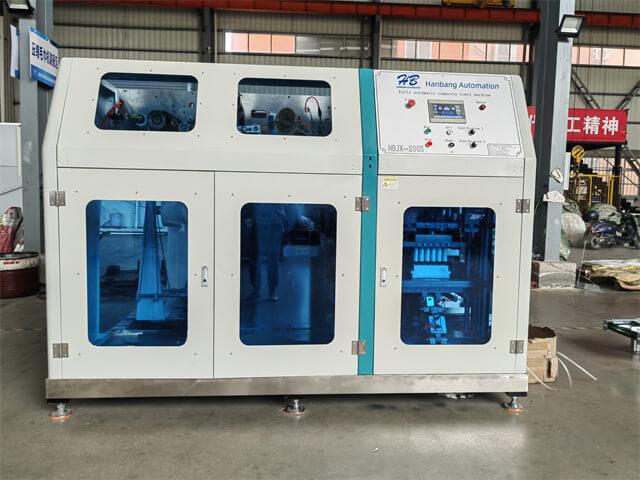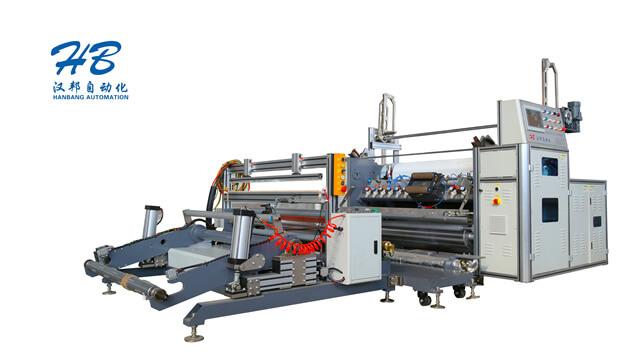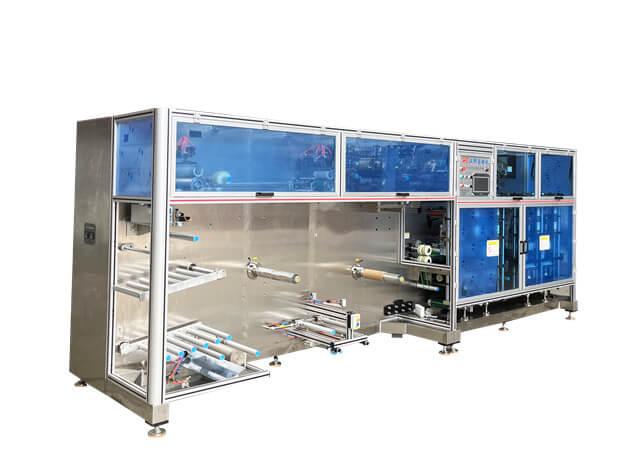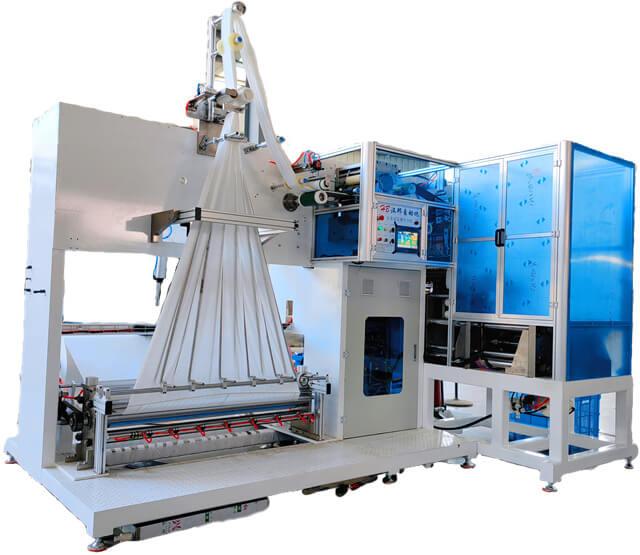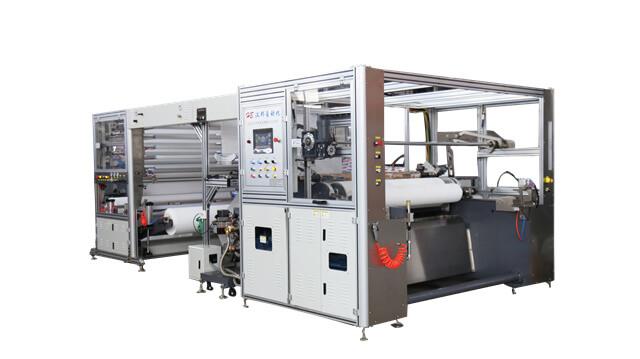Author:HB Nonwoven MachineryFROM:Compressed Towel Machine Manufacturer TIME:2023-10-23
Non woven fabric slitting machines play a crucial role in the production of various hygiene products, such as diapers and sanitary napkins. These machines are designed to efficiently cut and slit non woven fabrics into the required dimensions, ensuring precise and high-quality end products. The applications of non woven fabric slitting machines are extensive and have greatly transformed the hygiene industry. In this article, we will explore the various applications and benefits of these machines.
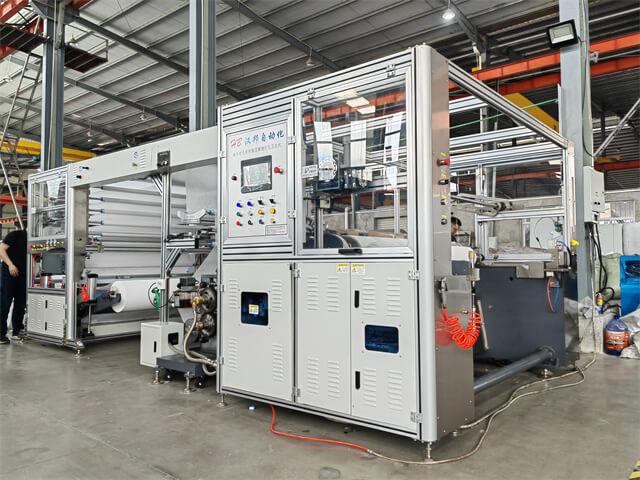
One of the primary applications of non woven fabric slitting machines is in the production of diapers. These machines are used to slit the non woven fabric, which forms the absorbent core of the diaper. With their high precision and speed, slitting machines ensure that the fabric is cut with accuracy and consistency, enabling efficient diaper manufacturing.
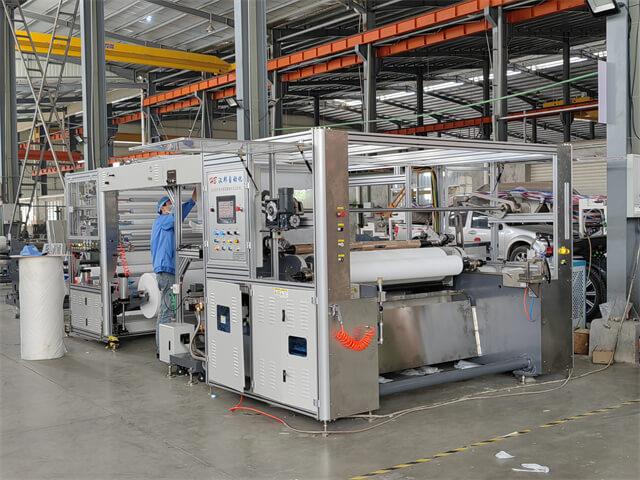
In the manufacturing of sanitary napkins, non woven fabric slitting machines are employed to slit the top sheet and absorbent layer. These machines ensure that the slitting process is carried out smoothly and without any defects. The precise slitting of the non woven fabric contributes to the overall comfort and effectiveness of the sanitary napkins.
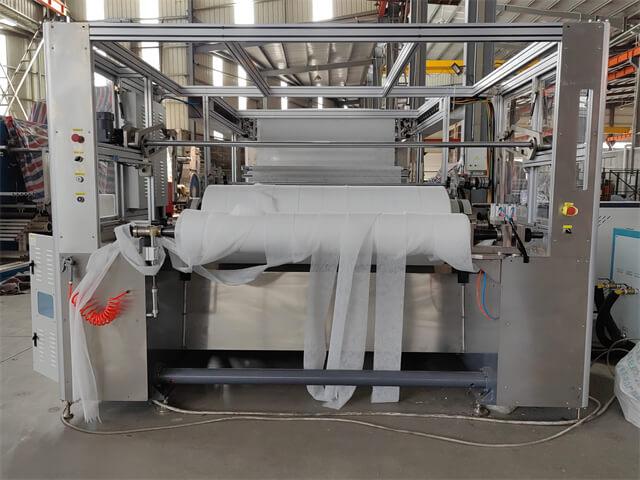
Non woven fabric slitting machines also find application in the production of wound dressings. These machines are used to slit the non woven fabric into suitable sizes for wound dressing purposes. The accuracy and efficiency of the slitting process contribute to the proper fit and effectiveness of the dressings in providing optimal care and protection for wounds.
Another significant application of non woven fabric slitting machines is in the production of medical gowns and masks. These machines are utilized to slit the non woven fabric into precise dimensions, allowing for the efficient manufacturing of high-quality gowns and masks. The slitting process ensures that the fabric maintains its integrity and fits well, providing the necessary protective barrier in medical settings.
Non woven fabric slitting machines are also used in the production of various cleaning products, such as wet wipes and disposable cleaning cloths. These machines enable the accurate slitting of the non woven fabric, ensuring that the final products have the desired size and shape. The efficiency of the slitting process contributes to the overall quality and effectiveness of the cleaning products.
In addition to hygiene products, non woven fabric slitting machines are extensively used in various industrial applications. These machines are employed in the production of automotive products, insulation materials, filters, and more. The ability to slit non woven fabrics with precision and efficiency enables the manufacturing of high-performance industrial products.
The furniture and bedding industry also benefits from non woven fabric slitting machines. These machines are utilized in the production of upholstery fabrics, mattress covers, and bedding materials. By accurately slitting the non woven fabrics, manufacturers can create appealing and comfortable products that meet customer demands.
Non woven fabric slitting machines are increasingly used in agriculture and horticulture applications. These machines are employed in the production of crop covers, plant protection materials, and nursery fabrics. The precise slitting of non woven fabrics ensures optimal coverage and protection for crops and plants, contributing to successful agriculture and horticulture practices.
Non woven fabric slitting machines have revolutionized the hygiene industry and have extensive applications in various sectors. From diaper production to medical gowns, cleaning products to industrial applications, these machines provide accurate and efficient slitting operations. The ability to produce high-quality end products with precision contributes to improved comfort, protection, and overall customer satisfaction. With advancements in technology, non woven fabric slitting machines continue to play a vital role in the production of diverse products, driving innovation and growth in various industries.
